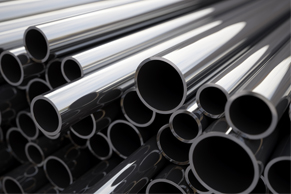The steel pipe industry is poised to grow in double digits
Published by Sharekhan Education | June 8, 2022

The steel pipe industry is poised to grow in double digits
Amit Pathak | Sharekhan Education
Pipelines are generally the economical way to transport large quantities of oil, refined petroleum products, or natural gas to the mainland. In the United States, pipelines move 70% of all petroleum products. In contrast, around 30% of petroleum products are transported through pipelines to India. Going forward, oil and gas will be a staple in the energy mix and its overall absolute demand will continue to grow over the coming decades.
Industry Overview:
India is the third-largest energy consumer after China and the United States. India is significantly dependent on imports to meet its energy needs. The Government of India’s Vision 2030 document plans to increase natural gas use to 20% of its energy mix from 6.7% in 2020. India needs a large pipeline transportation network to achieve its vision. Currently, India has an operational network of 20,334 km. India would need another 17,000km of pipeline over the next 6-8 years to achieve its stated goal. India would require around 2.0-2.5 million tons of oil/gas pipes over the next 3-4 years.
Use of pipes in Government Initiatives:
The Indian government has created a dedicated “Jal Shakti” ministry, which will oversee huge investments worth Rs 3.5 trillion in tap water distribution and around Rs 5.5 trillion in river connection plans. The government’s “Nal se Jal” scheme has the potential to greatly benefit the demand for steel pipes. Ductile iron (DI) pipes are the industry standard for modern water and wastewater systems. The main drivers of growth are urbanization, agricultural growth and the government’s push to build sustainable water resources. Ductile iron pipes would see 12-15% growth over the next 3-4 years.
Russia-Ukraine crises:
The Russia-Ukraine crisis has brought oil to multi-year highs. The world has recognized the need to diversify its dependence on Russia and change the years of under-investment in the oil sector. Long-term rising oil prices will improve capital spending plans for global oil companies. Demand for the pipeline is expected to remain solid for the next 2-3 years, driven by strong demand in the EU and MENA region.
Growth Prospects:
The life of steel pipelines is over 30-35 years. The replacement of obsolete pipes has been extremely slow in the previous decade. Environmental, social and governance (ESG) compliance has taken hold in recent times, which would draw investor attention to ageing pipelines and the potential threats they pose, thereby increasing the pace of replacement in the short to medium term.
India will see dual-engine growth from the gas grid and demand for water pipelines over the next 3-4 years. Indian steel pipe companies such as Jindal SAW and Ratnamani Metals and Tubes are looking to a strong future thanks to improved demand from the water and oil and gas segments.
Sign up for one of our free “Power Money Workshops” and gain more knowledge by investing. Over investment training program called “Ace Investor” will improve your investment skills. Not only do we teach you the step-by-step process of identifying fundamentally sound stocks, but we also teach you how to invest like a pro. So, come and try it for yourself!




